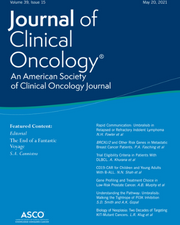Shin, Hyewon, Dudley, William N., Bartlett, Robin, Yasui, Yutaka, Srivastava, Deokumar, Ness, Kirsten K., Krull, Kevin R., Robison, Leslie L., Hudson, Melissa M., Huang, I-Chan
Journal Of Clinical Oncology
Volume 39, Number 15
Background: Childhood cancer survivors experience concurrent symptoms, but associations with health outcomes are unknown. We characterize symptom clusters among adult survivors of childhood cancer in SJLIFE and tests associations with health-related quality of life (HRQL) and clinically assessed physical and neurocognitive performance. Methods: This cross-sectional study includes survivors diagnosed when <18 years of age, ≥10 years off-therapy, and ≥18 years of age at evaluation. Survivors rated 37 symptoms over 10 domains (cardiac, pulmonary, sensory, motor, nausea, pain, fatigue, memory, anxiety, depression), representing 3 broader symptom groups (physical, somatic, psychological). They also underwent a rating of HRQL (SF-36 PCS/MCS) and testing of physical performance (quantitative sensory, motor, endurance, mobility) and neurocognition (processing speed, executive function, attention, memory problems). Latent class analysis determined survivors with distinct symptom burden. Polytomous logistic regression identified risk factors of symptom clusters; multivariable regression tested associations of symptom clusters with health outcomes. Results: Among 3,085 survivors, mean [SD] age at evaluation was 31.9 [8.3] years, time from diagnosis was 28.1 [9.1] years, 49.7% were female, 37.1% were treated for leukemia and 33.0% for solid tumors. Four groups of survivors with distinct symptom burden were found: Cluster 1 (52%, low prevalence in all 3 symptom groups); Cluster 2 (16%, low in physical, moderate in somatic, high in psychological); Cluster 3 (18%; high in physical, moderate in somatic, low in physiological); and Cluster 4 (14%, high in all 3 symptom groups). Compared to the lowest symptom burden (Cluster 1), survivors with highest burden (Cluster 4) were significantly more likely to be female (OR 2.5; 95%CI 1.9, 3.4), have below a high school education (OR 7.7; 95%CI 4.5, 13.3), no insurance (OR 1.5; 95%CI 1.1, 2.3) and previous exposure to corticosteroids (OR 1.8; 95%CI 1.0, 3.0). High physical, moderate somatic and low psychological symptom burden (Cluster 3) was associated with below high school education (OR 2.7; 95%CI 1.4, 5.0), exposure to platinum agents (OR 2.2; 95%CI 1.4, 3.7) and brain radiation ≥30Gy (OR 4.0; 95%CI 2.3, 6.9) in contrast to Cluster 1. Survivors in Cluster 4 had the poorest PCS, MCS, physical and neurocognitive outcomes vs in Clusters 2 or 3, whereas those in Cluster 1 had the best outcomes (F-values for 4 clusters: 291.4 [PCS], 269.2 [MCS], 61.5 [physical], 36.9 [neurocognitive], p-values <0.001; effect sizes for Clusters 4 vs 1: 0.4-2.0 [4 outcomes]). Conslusions: Nearly 50% of survivors belong to symptom clusters with ≥1 moderate/high burden groups, associated with the socio-demographic and treatment exposures. Survivors in the highest symptom burden cluster had the poorest HRQL and functional outcomes. © 2021 by American Society of Clinical Oncology
